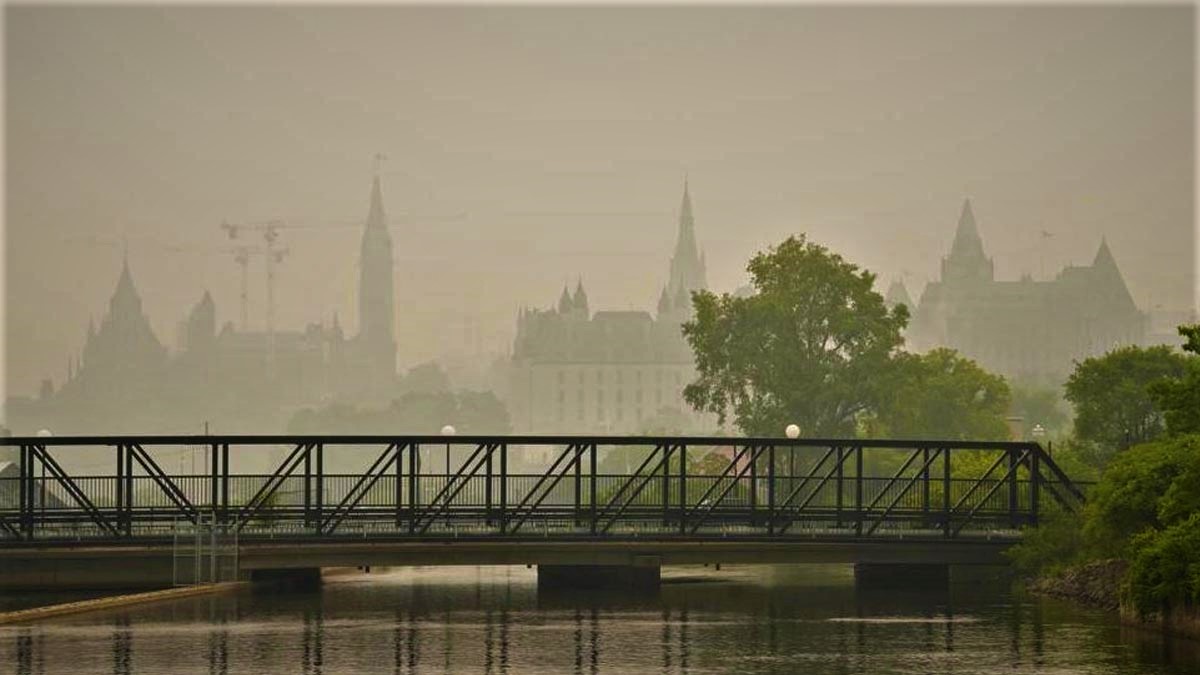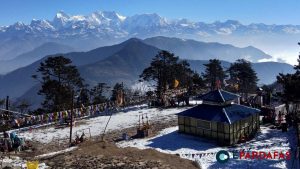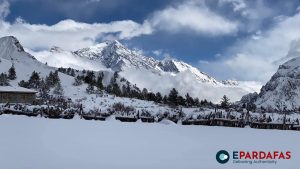
US, Canada saw dangerous smoke this week but it’s a routine peril for many developing countries

Washington, June 11:Thick, smoky air from Canadian wildfires made for days of misery in New York City and across the U.S. Northeast this week. But for much of the rest of the world, breathing dangerously polluted air is an inescapable fact of life — and death.
Almost the entire world breathes air that exceeds the World Health Organization’s air-quality limits at least occasionally. The danger grows worse when that bad air is more persistent than the nightmarish shroud that hit the U.S. usually in developing or newly industrialized nations. That’s where most of the 4.2 million deaths blamed on outdoor air pollution occurred in 2019, the UN’s health agency reported.
“Air pollution has no boundaries, and it is high time everyone comes together to fight it,” said Bhavreen Kandhari, the co-founder of Warrior Moms in India, a network of mothers pushing for clean air and climate action in a nation with some of the world’s consistently worst air. “What we are seeing in the U.S. should shake us all.”
“This is a severe air pollution episode in the U.S.,” said Jeremy Sarnat, a professor of environmental health at Emory University’s Rollins School of Public Health. “But it’s fairly typical for what millions and millions of people experience in other parts of the world.”
Last year, nine of the 10 cities with the highest annual average of fine particulate matter were in Asia — including six in India, according to air quality company IQAir, which aggregates readings from ground level monitoring stations worldwide.
Fine particulate matter, sometimes denoted as PM 2.5, refers to airborne particles or droplets of 2.5 microns or less. That’s far smaller than a human hair, and the particles can reach deep into lungs to cause eye, nose, throat and lung irritation and even affect heart function.
Sajjad Haider, a 31-year-old shopkeeper in Lahore, Pakistan, rides his motorbike to work daily. He wears a mask and goggles against frequent air pollution in the city of 11 million, but suffers from eye infections, breathing problems and chest congestion that get worse as smog grows in winter.
On his doctor’s advice, he relies on hot water and steam to clear his chest, but said he cannot follow another bit of the doctor’s advice: Don’t go out on his motorbike if he wants to keep his health.
“I can’t afford a car and I can’t continue my business without a motorbike,” said Haider.
Last year, Lahore had the world’s highest average concentration of fine particulate matter at nearly 100 micrograms per cubic meter of air. By comparison, New York City’s concentration hit 303 at one point on Wednesday.
But New York’s air typically falls well within healthy levels. The U.S. Environmental Protection Agency’s standard for exposure is no more than 35 micrograms per day, and no more than 12 micrograms a day for longer-term exposure. New York’s annual average was 10 or below the past two years.
New Delhi, a heaving city of more than 20 million where Kandhari lives, usually tops the list of the many Indian cities gasping for breath as haze turns the capital’s sky gray and obscures buildings and monuments. It’s worse in autumn, when the burning of crop residues in neighbouring states coincides with cooler temperatures that trap deadly smoke over the city, sometimes for weeks.
Vehicle emissions and fireworks set off during the Hindu Diwali festival add to the murk, and the results include coughs, headaches, flight delays and highway pileups. The government sometimes asks residents to work from home or carpool, some schools go online and families that can afford them turn to air purifiers. (AP)












Comments